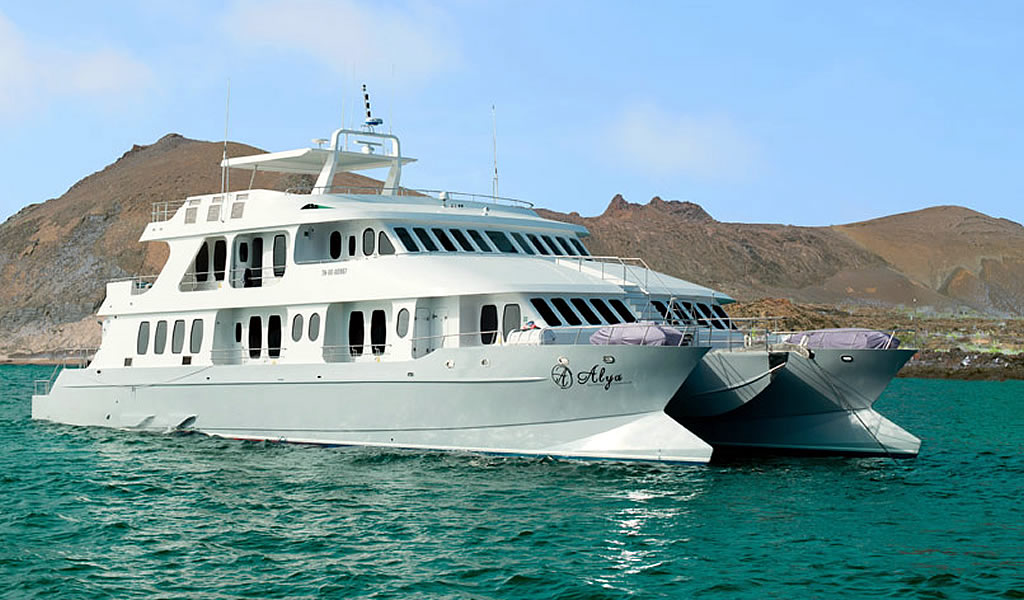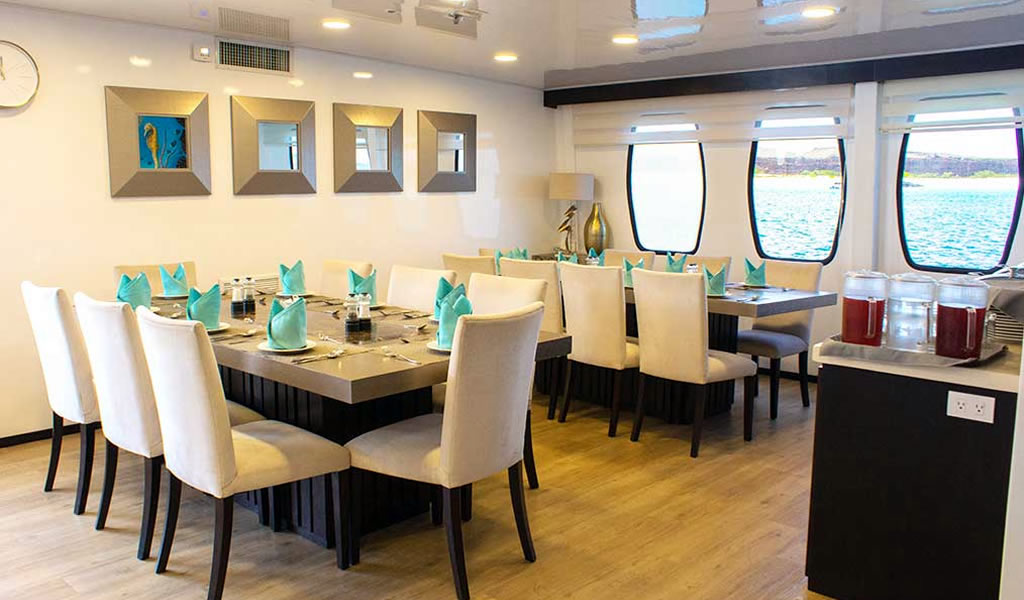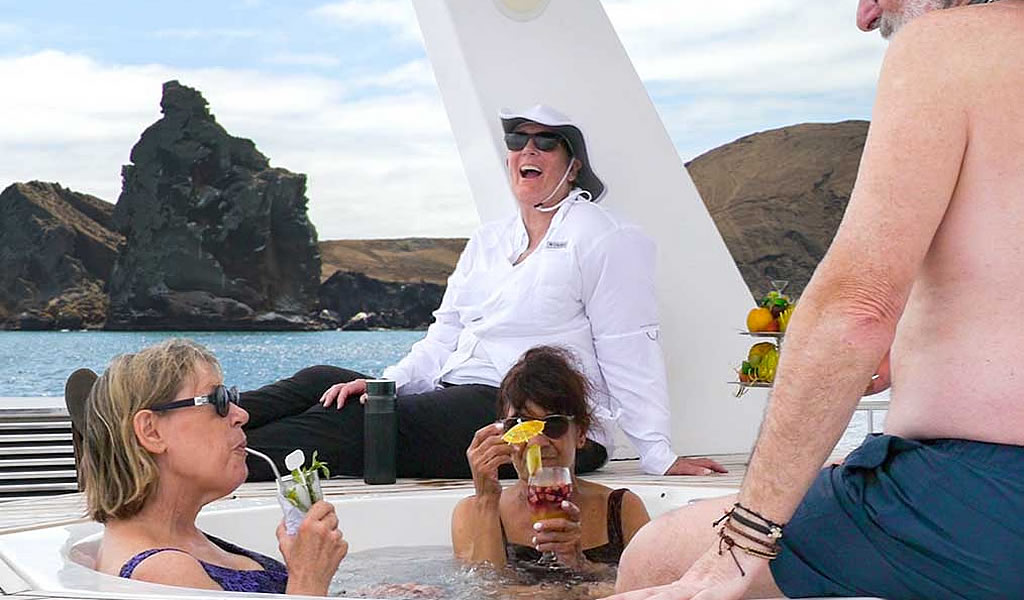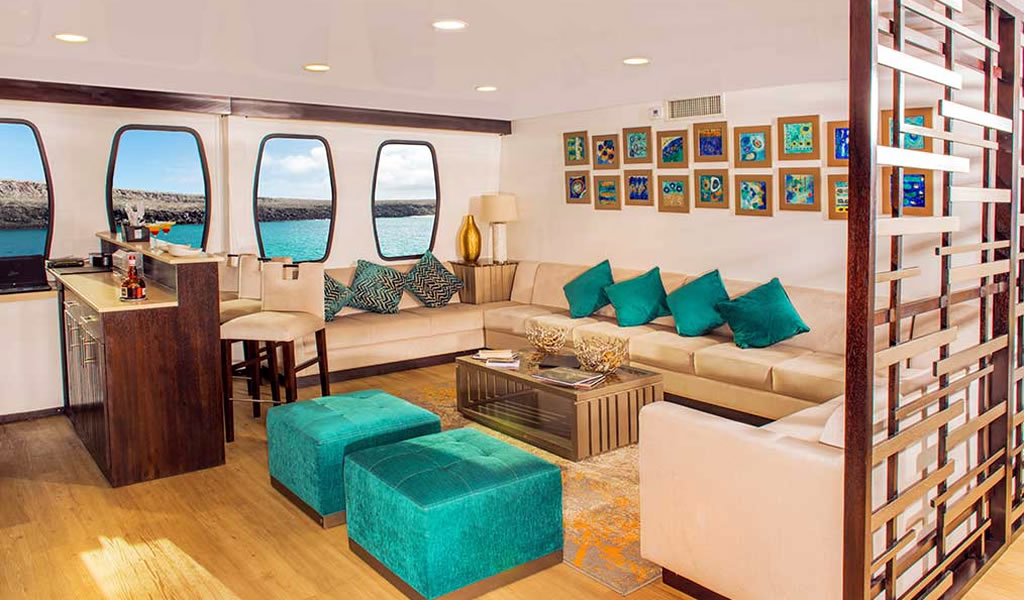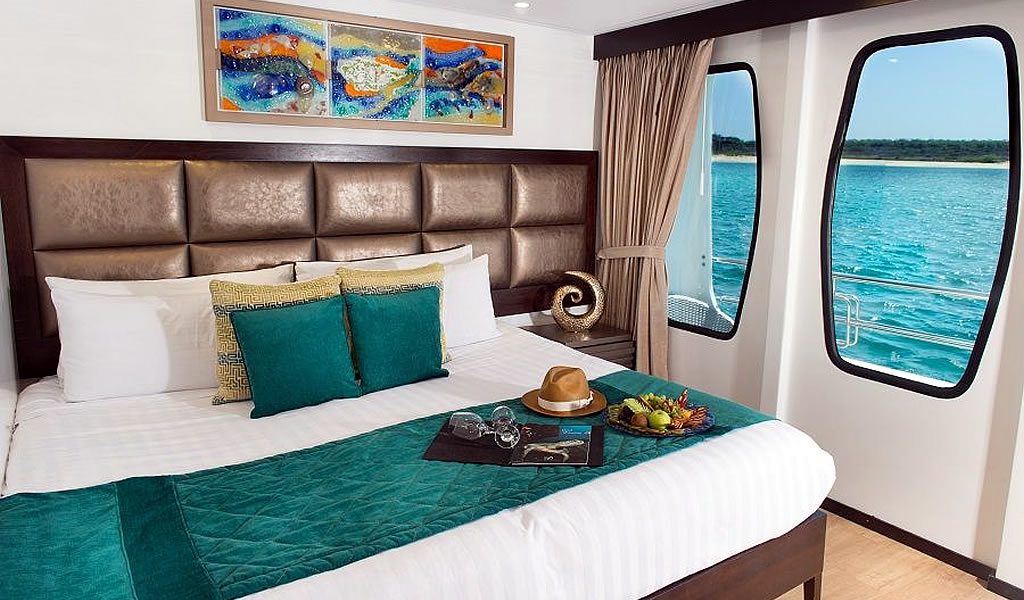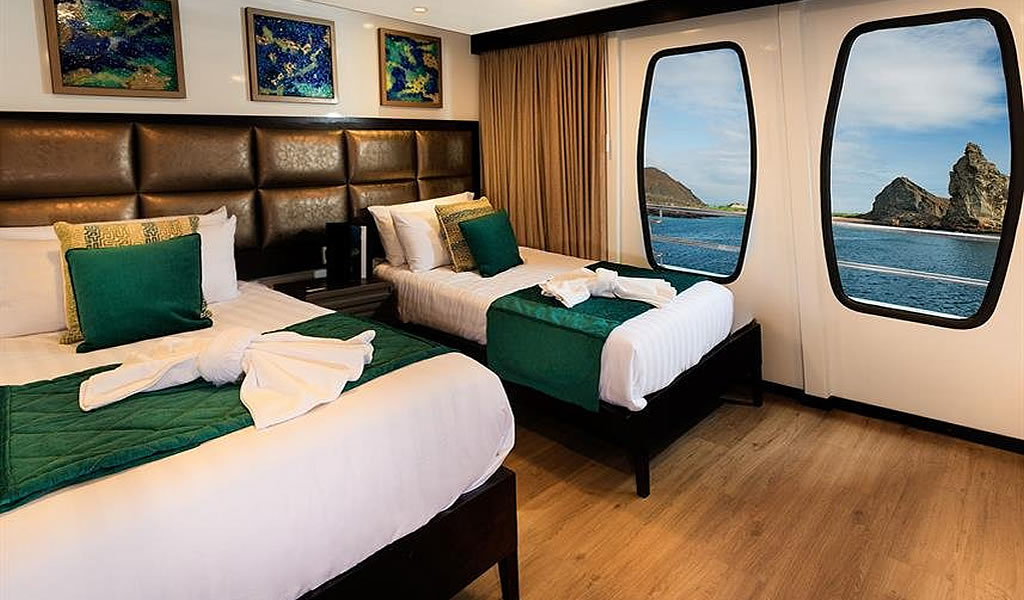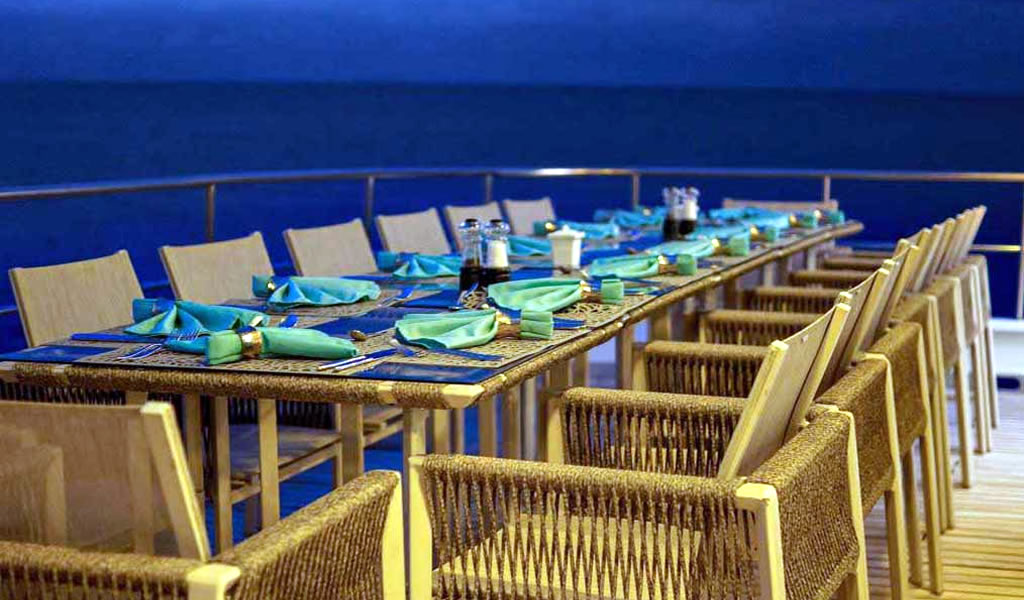Show Detailed Itinerary
Day 01
Am: Baltra AirportDeparture to the Galapagos Islands, arrival at Baltra airport, where our naturalist guide of the National Park will be waiting for you.
Pm: Black Turtle CoveBlack Turtle Cove gets its name from the abundance of green see turtles, locally known as: “tortugas negras”. There is no landing here so you will be doing a boat tour on the dinghies, exploring shallow channels and small coves surrounded by beautiful mangrove forests. Reef sharks, sea turtles and several species rays inhabit this beautiful area which is considered an important mating area for turtles and a nursery for several species of sharks. Herons, pelicans and boobies are also common here as they prey in schools of anchovies.
Highlights: White-tipped and black-tipped reef sharks, green see turtles, rays, herons, blue-footed boobies, mangroves.
Meals: Lunch, Dinner
Lodging: Catamarán Alya
Day 02
Am: Darwin BayGenovesa is a favorite island for birdwatchers as it is home for very large colonies of seabirds. From the minute you set foot at the beach you will be amazed by the noise of hundreds of boobies, gulls and frigatebirds flying over your heads, perched in the bushes or nesting on the sandy terrain. The trail is an ultimate wildlife experience as there are animals everywhere; sea lions and marine iguanas near the sea; night herons, lava & swallow tailed gulls, Darwin finches, Galapagos doves, mockingbirds and many more species inland.
Snorkel: The bay offers several places to snorkel; from deep waters along the cliffs across the bay, to shallow waters by the beach. In either case, there are many fish to see and great chances of seeing sharks, rays and sea lions.
Highlights: Nesting great frigatebirds, red footed & Nazca boobies, Galapagos sea lions, lava & swallow-tailed gulls, yellow-crown night herons, Genovesa ground finch, Genovesa cactus finch, Galapagos mockingbirds.
Trail: 1,2 km
Pm: El BarrancoEl Barranco is located in the southern part of Darwin Bay at Genovesa Island. The cliffs face the sea are made of very fragile fractured lava, making it the ideal place for storm petrel to build their colonies, which attracts an important population of short-eared owls preying of the nesting birds. Red footed and Nazca boobies are abundant along the trail. At the base of the cliffs you can see Galapagos fur seals resting in shaded areas, as well as several species of seabirds.
Snorkel: You can snorkel along the cliffs where there are many fish and great chances of seeing sharks, rays and sea lions.
Highlights: Nesting great frigatebirds, red footed & Nazca boobies, Galapagos sea lions, Galapagos fur seals, lava & swallow-tailed gulls, yellow-crown night herons, Genovesa ground finch, Genovesa cactus finch, Galapagos mockingbirds.
Trail: 1,2 km
Meals: Breakfast, Lunch, Dinner
Lodging: Catamarán Alya
Day 03
Am: Sullivan BayThis hike is a journey into understanding the birth of these volcanic islands. You will walk in a very well preserved flow of Pahoehoe lava, which will give you endless opportunities to see the delicate textures of these type of lavas which only appear in a few places throughout the world. At first sight the barren landscape looks completely deprived of life, but look carefully for pioneer plants, lava lizards and small birds. By the shore, you can find penguins, pelicans and oystercatchers.
Snorkel: You will have the option to swim or snorkel from a coral sand beach or from the dinghies. Getting underwater is like traveling to another world: if the land is almost lifeless, the sea is teaming with life, including large schools of fish, Galapagos penguins, reef sharks, turtles and rays.
Highlights: Pahoehoe lava, Galapagos penguins, oystercatchers, Galapagos hawks.
Trail: 2,2 km / 1,4 mi
Pm: BartoloméBartolome is one of the most iconic places in the Galapagos and one of the few where you can see penguins without going to the remote areas of western Isabela and Fernandina. You will get great views of Pinnacle Rock, located in the northern side of the island, right next to a beautiful peach-color sand beach.
The hike to the top of the island is fantastic and will offer you incredible views of lunar landscapes with scattered volcanic cones. Many islands are visible from this outlook, as well as the bay of Sullivan and the Pinnacle rock.
Snorkel: You will have the option to swim or snorkel from the beach. This area holds a well-deserved reputation of being one of the best snorkeling places in the Galapagos, not only because it’s clear and calm water, but also because of the presence of penguins, which are relatively easy to find while snorkeling, along with an incredible diversity of fish, colorful invertebrates, sea lions, turtles, rays and reef sharks.
Highlights: Galapagos penguins, volcanic landscapes, Pinnacle rock, blue- footed boobies, herons, sea lions, sharks.
Trail: 1,5 km
Meals: Breakfast, Lunch, Dinner
Lodging: Catamarán Alya
Day 04
Am: Chinese HatThis small islet is formed by a volcanic cone with a perfect symmetrical shape. It is separated from Santiago by a narrow channel forming one of the most beautiful bays in the islands. Blue-turquoise water and coral sand beaches surrounded by dark lava rocks gives this area a real tropical character, which makes even more surprising finding penguins resting in the rocks. The trail goes along the shore, taking you through a small colony of sea lions.
Snorkel: When you swim in this place you will get mesmerized by the incredible colors of the fish and the sleek silhouette of reef sharks and, it is not uncommon to see a penguin darting through the water chasing anchovies like a small torpedo.
Highlights: Galapagos sea lions, Galapagos penguins, lava tubes, oystercatchers, Galapagos hawks.
Trail: 1,2 km
Pm: MosqueraMosquera is mostly a barren sand bar with some rocky areas and scattered salt-resistant plants. You can walk along the beach and enjoy seeing playful sea lion pups surfing the waves and having a great time in the tide pools. Look for endemic lava gulls which are often seen flying over the beach in the search of food.
Snorkel: If the waves are not too big you can snorkel at the northern tip of the island or at one of the small beaches in the sheltered side.
Highlights: Galapagos sea lions, lava gulls, oystercatchers, shorebirds.
Trail: There is no trail, but you can walk along a sandy area of 0,6 km / 0,4mi
Meals: Breakfast, Lunch, Dinner
Lodging: Catamarán Alya
Day 05
Am: Charles Darwin StationThe Charles Darwin Station is a nonprofit organization which has been working for decades together with the Galapagos National Park to preserve the biodiversity of these unique islands. During this visit you will learn about the projects that both institutions carry together to protect the native species and eradicate the invasive ones which are threatening the Galapagos environment. One of the most important and emblematic projects has been reproducing giant tortoises in captivity. The visit is mostly outdoors in a beautiful dry native forest with giant cactus and many other interesting native plants. It is also a fantastic place to find several endemic Darwin finches, as well as flycatchers and mockingbirds.
Highlights: Galapagos giant tortoise & land iguanas breeding program, Darwin finches, Galapagos mockingbirds, Galapagos flycatchers, yellow warblers.
Trail: 2 km
Then, transfer to the airport to take your flight back to continental Ecuador..

